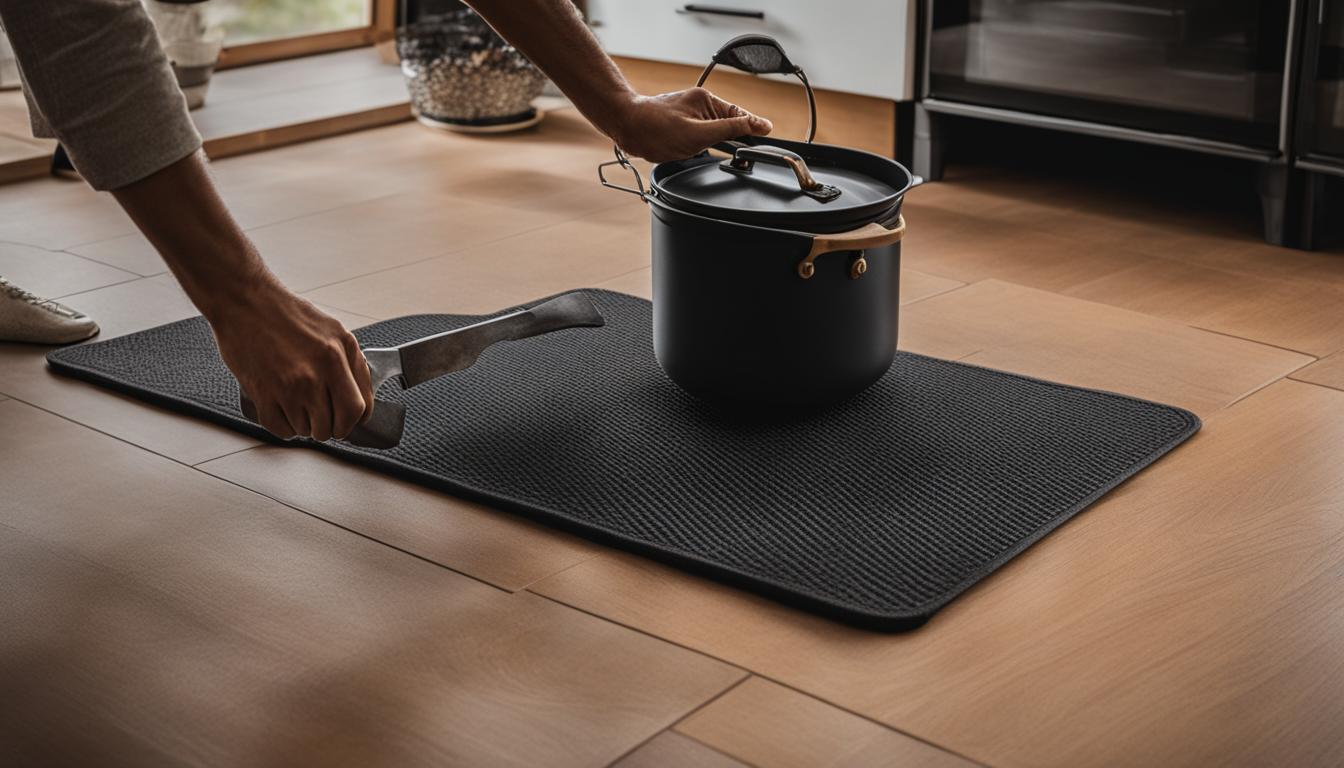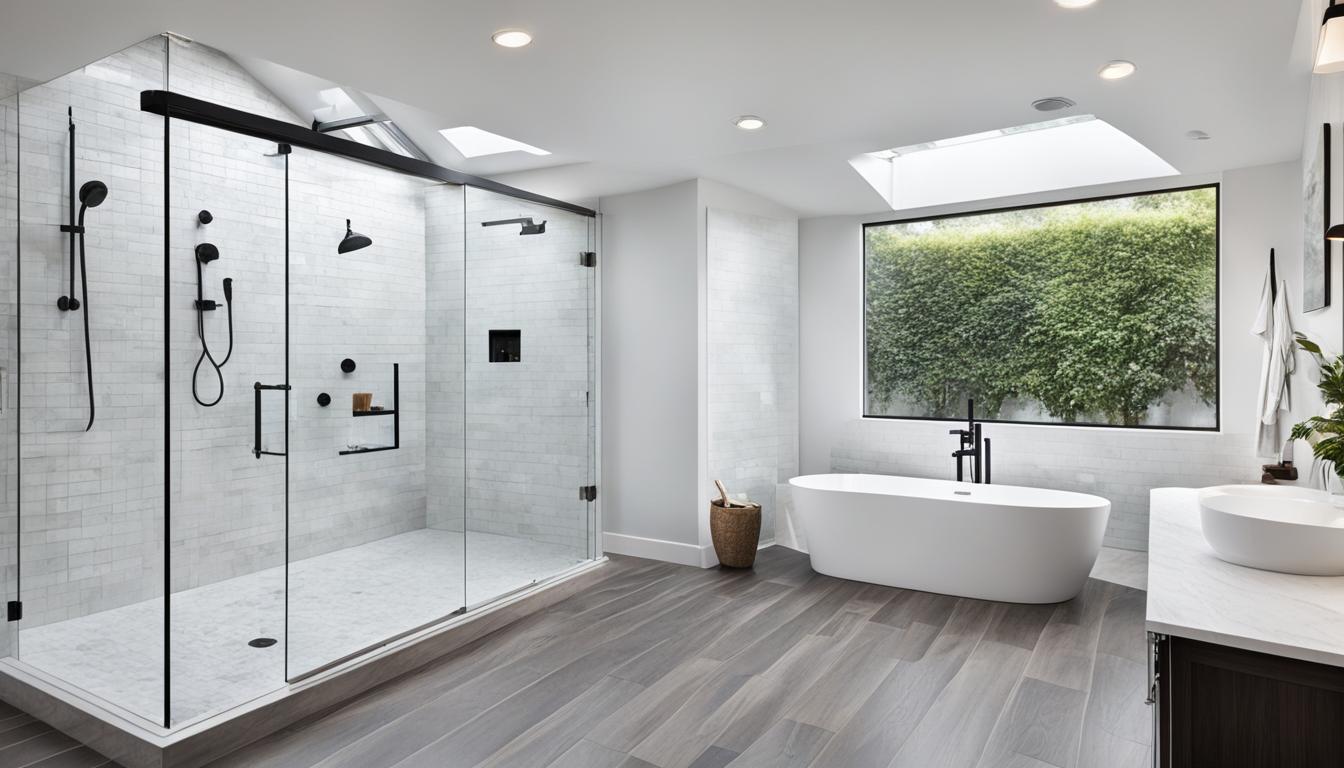Proper ventilation is vital for a kitchen sink located below a window. It ensures a clean and odor-free environment while promoting efficient drainage and compliance with plumbing codes.
In this article, I will discuss the importance of proper ventilation, various venting options, and step-by-step instructions for installing vents for a kitchen sink below a window.
Contents
- 1 Importance Of Proper Ventilation For A Kitchen Sink
- 2 Installing A Vent Pipe Through The Wall
- 3 Using A Toe-Kick Vent
- 4 Considerations For Venting A Sink Under A Window
- 5 How to Choose the Right Venting Option
- 6 Conclusion
- 7 FAQ
- 7.1 How important is proper ventilation for a kitchen sink?
- 7.2 What are the options for venting a kitchen sink located below a window?
- 7.3 How do I install a vent pipe through the wall?
- 7.4 What is a toe-kick vent, and how does it work for venting a sink under a window?
- 7.5 What considerations should I consider when venting a sink under a window?
- 7.6 What are the pros and cons of different venting techniques?
- 7.7 How do I choose the right venting option for a kitchen sink under a window?
- 7.8 What is the importance of proper ventilation when venting a sink under a window?
- 8 Source Links
Key Takeaways:
- Proper ventilation is crucial to maintain a clean and odor-free kitchen environment.
- Consider different venting techniques, such as installing a pipe through the wall or using a toe-kick vent.
- Ensure compliance with local plumbing codes and regulations.
- Choose the venting option that best suits your sink and window placement.
- Regular maintenance is essential to keep the venting system functioning effectively.
Importance Of Proper Ventilation For A Kitchen Sink
Proper ventilation is essential for maintaining a clean and healthy kitchen environment, especially regarding your kitchen sink.
The importance of proper ventilation cannot be understated as it plays a crucial role in effectively removing odors, steam, and smoke, preventing them from lingering in the kitchen.
Adequate ventilation keeps the kitchen smelling fresh and prevents the buildup of harmful gases such as carbon monoxide, reducing the risk of gas leaks and poisoning. Additionally, proper ventilation helps minimize bacterial growth and odors, ensuring a hygienic and pleasant cooking space for you and your family.
One of the key benefits of proper ventilation is enhancing the overall air quality in your kitchen. By effectively removing airborne pollutants and improving indoor air circulation, ventilation helps create a healthier environment and reduces the likelihood of respiratory issues caused by poor air quality.
Furthermore, proper ventilation plays a vital role in maintaining the longevity of your kitchen components. Excess steam and moisture can cause damage to cabinets, walls, and countertops, leading to costly repairs.
You can prevent moisture accumulation with adequate ventilation, protecting your kitchen from potential water-related issues.
Whether you opt for traditional exhaust fans, under-sink vents, or other ventilation methods, it’s crucial to prioritize proper ventilation for your kitchen sink.
Investing in a reliable ventilation system improves your kitchen’s overall functionality and creates a more comfortable and inviting space for your culinary adventures.
So, remember, when it comes to your kitchen sink, don’t overlook the importance of proper ventilation to maintain optimal air quality and a pleasant cooking environment.
Proper ventilation is crucial in maintaining a clean and healthy kitchen environment.
Installing A Vent Pipe Through The Wall
Installing a vent pipe through the wall is viable when venting a kitchen sink under a window. This method ensures proper ventilation and eliminates odors and moisture accumulating in the sink area.
To undertake this installation, you will need essential materials such as a vent pipe, vent cap, drill with a hole saw attachment, measuring tape, pencil, and pipe glue. Follow the step-by-step process below for a successful vent pipe installation:
- Measure the distance between the kitchen sink drain and the external wall where you intend to install the vent pipe.
- Mark the appropriate spot on the wall to create an opening for the vent pipe.
- Use a drill with a hole saw attachment to create a hole in the wall with the same diameter as the vent pipe.
- Ensure the vent pipe extends vertically through the hole and position it appropriately to allow proper ventilation.
- Secure the vent pipe and connect it to the sink drain using glue.
- Attach a vent cap to the top of the pipe to prevent debris or pest entry while allowing air to flow freely.
- Check local codes and regulations to ensure compliance with venting requirements.
- Maintain regular maintenance of the venting system to ensure optimal functionality and eliminate any clogs or obstructions.
Following these installation steps, you can effectively vent your kitchen sink under a window and maintain a clean and fresh kitchen environment.
| Pros | Cons |
|---|---|
| Adequate ventilation to eliminate odors and moisture. | Requires drilling a hole through the wall. |
| Relatively straightforward installation process. | Must comply with local codes and regulations. |
| Does not obstruct the view from the kitchen window. | Maintenance is necessary to prevent clogs or obstructions. |
Using A Toe-Kick Vent
A toe-kick vent is another effective way to vent a kitchen sink under a window. This discreet venting option is installed at the base of the kitchen cabinets, typically underneath the sink area.
Utilizing a toe-kick vent ensures proper air circulation and ventilation, effectively expelling unpleasant odors, moisture, and gases that may accumulate in the kitchen.
The toe-kick vent is designed to blend seamlessly with the surrounding cabinetry, ensuring a clean and aesthetically pleasing kitchen design.
Installing a toe-kick vent is a straightforward process that can be accomplished by following a step-by-step installation guide. It provides a discreet and efficient solution for venting a sink in the baseboard while maintaining optimal functionality and air quality in your kitchen.
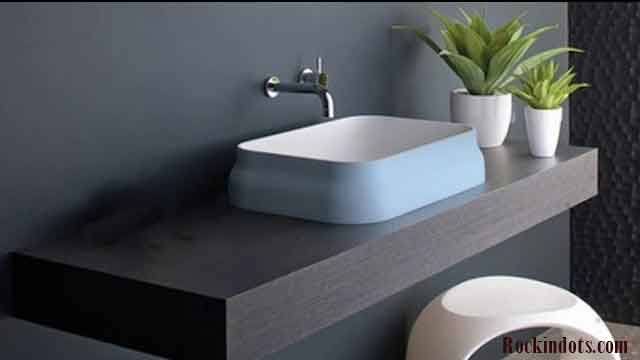
Considerations For Venting A Sink Under A Window
Several important considerations should guide you when entering a sink under a window. These considerations include:
- Sink Placement: It is crucial to ensure proper sink placement, avoiding direct installation directly under the window. This helps to prevent obstruction of airflow and promotes adequate ventilation.
- Window Placement and Venting: It is essential to understand the window placement and its impact on venting. Consider whether the window type and design may affect the efficiency of the venting system and make adjustments accordingly.
- Sink Venting Techniques: Choose the appropriate venting technique for the sink under the window. Options may include study vents, air admittance valves (AAVs), loop vents, or island vents. Selecting the proper technique will ensure adequate airflow and ventilation.
- Vent Distance Requirements: Complying with vent distance requirements is vital for plumbing code compliance. Ensure that the venting system is installed at the proper distance to maintain optimal functionality and meet regulatory standards.
- Vent Pipe Size: Determining the correct vent pipe size is crucial for efficient airflow and ventilation. Ensure the vent pipe size aligns with the requirements of the sink and plumbing system.
- Water Drainage Slope: Considering the water drainage slope is essential to avoid drainage issues. Ensure the proper slope is maintained for adequate water drainage away from the sink.
Considering these considerations, you can effectively vent a sink under a window, promoting proper ventilation and compliance with plumbing codes.
Example Vent Distance Requirements:
| Vent Distance | Requirements (in inches) |
|---|---|
| The vertical distance between the sink drain and vent connection | Not more than 5 feet |
| Horizontal distance between sink drain and vent | Not more than 42 inches |
| Distance between vent terminations and openings (windows, doors) | Not less than 10 feet |
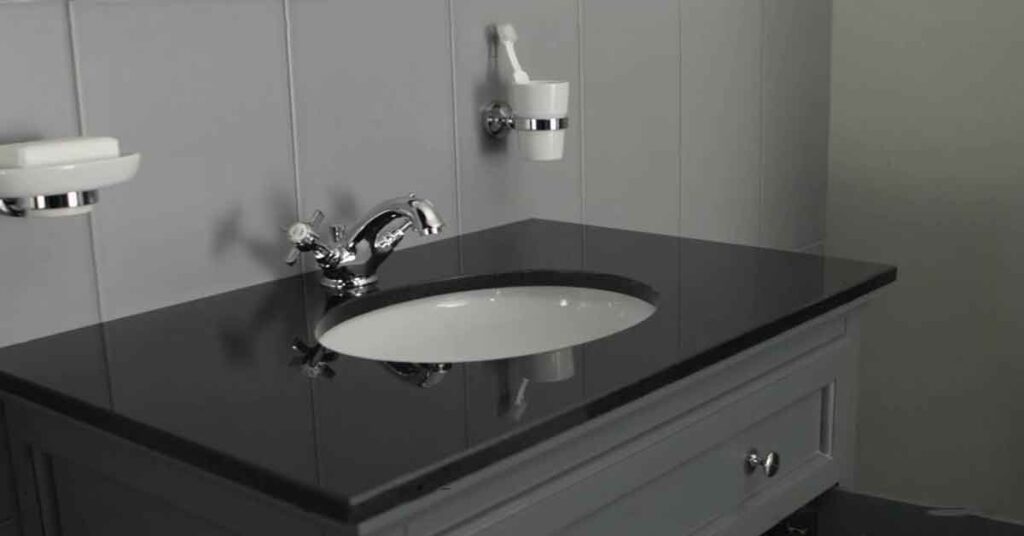
| Technique | Pros | Cons |
|---|---|---|
| Studor Vents | Easy installation Minimal maintenance Prevents sewer gas buildup | It may not be allowed in certain jurisdictions |
| Air Admittance Valves (AAVs) | Efficient ventilation in tight spaces Prevents siphoning of traps | Must comply with local plumbing codes |
| Loop Vents | Effectively releases negative pressure Ensures efficient drainage | It may require complex plumbing work |
| Island Vents | Suitable for island sink installations Separate ventilation system | It may require additional planning and installation considerations |
How to Choose the Right Venting Option
The appropriate venting option is essential when entering a kitchen sink under a window. Several factors should be considered in this decision-making process to ensure efficient and compliant ventilation for your kitchen sink.
- Sink and Window Placement: Consider the location of the sink and the window in relation to each other. It is essential to avoid placing the sink directly under the window to allow for adequate ventilation.
- Local Plumbing Codes and Regulations: Familiarize yourself with your area’s specific plumbing codes and regulations. Ensure that your chosen venting option aligns with these requirements.
- Available Space: Evaluate the open space in your kitchen. Some venting options may require more space than others. Choose an option that fits within your kitchen layout.
- Ease of Installation: Consider the ease of installation for each venting option. It is recommended to opt for an option that can be easily installed or seek assistance from a licensed plumber.
- Maintenance Requirements: Take into account the maintenance needs of each venting option. Some may require more frequent maintenance than others. Choose an option that aligns with your maintenance capabilities.
- Overall Effectiveness: Evaluate each venting option’s effectiveness in odor removal and moisture control. Choose an option that efficiently addresses these concerns.
You can choose the right venting option for your kitchen sink under a window by carefully evaluating these factors. Consulting with a licensed plumber can provide valuable insights and guidance in making the best decision for your situation.
| Venting Option | Pros | Cons |
|---|---|---|
| Under-Sink Vent | Easy installation, minimal maintenance | It may require modification to the existing plumbing |
| Toe-Kick Vent | Discreet, blends with kitchen design | Limited airflow may require professional installation |
| Wall Vent | Efficient airflow, effective odor removal | Requires wall modification, compliance with local codes |
| Loop Vent | Allows for long venting distances | Requires connection to an existing vent stack |
| Island Vent | Suitable for sinks on islands | Requires separate venting system |
By analyzing the pros and cons of each venting option, you can determine which one aligns best with your needs and preferences. Remember that local codes and regulations may restrict or dictate specific venting options. Choose the option that offers the most effective and compliant ventilation for your kitchen sink.
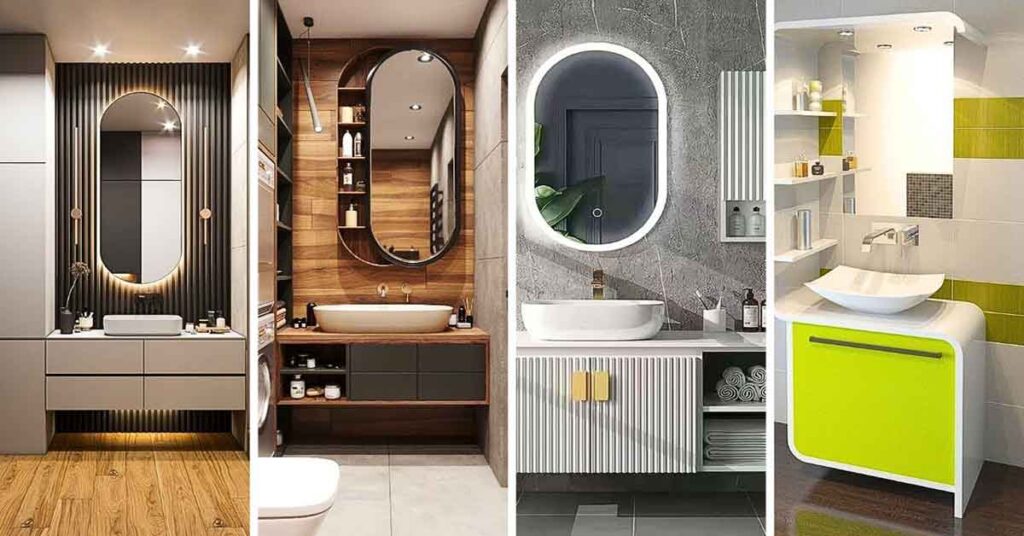
Note: Venting options may vary depending on your kitchen layout and plumbing setup. Consult with a licensed plumber to ensure compliance with local codes and regulations.
Conclusion
Proper ventilation is crucial for venting a sink under a window and maintaining a clean and odor-free kitchen environment. You can successfully vent your kitchen sink by understanding the importance of ventilation, exploring different options, and considering specific guidelines.
Whether you choose an under-sink vent, a toe-kick vent, or another method, ensure compliance with plumbing codes and proper installation to optimize functionality and air quality.
Remember, a well-ventilated kitchen sink area not only eliminates odors and moisture but also contributes to a healthier and more enjoyable cooking experience.
Take the time to evaluate the sink and window placement, consider local regulations, and select the most suitable venting option. Doing so allows you to create an efficient and compliant ventilation system for your kitchen sink under a window.
Don’t compromise on the proper ventilation for your kitchen sink. Take advantage of the available venting techniques, such as under-sink vents, toe-kick vents, and other options, to ensure your sink is properly vented.
Following sink venting guidelines and considering your kitchen layout, you can maintain a fresh and pleasant environment while safeguarding your home against potential plumbing issues.
FAQ
How important is proper ventilation for a kitchen sink?
Proper ventilation for a kitchen sink is crucial for maintaining a clean and healthy kitchen environment. It helps remove odors, steam, and smoke effectively, preventing them from lingering in the kitchen. Proper ventilation also prevents the buildup of harmful gases, reduces the risk of gas leaks and carbon monoxide poisoning, minimizes bacterial growth and odors, and enhances indoor air quality.
What are the options for venting a kitchen sink located below a window?
When venting a kitchen sink under a window, you can consider installing a vent pipe through the wall or using a toe-kick vent. Both options allow for proper air circulation and ventilation, helping to eliminate odors, moisture, and gases that can accumulate in the kitchen.
How do I install a vent pipe through the wall?
To install a vent pipe through the wall, you will need materials such as a vent pipe, vent cap, drill with a hole saw attachment, measuring tape, pencil, and pipe glue. The process involves measuring and marking the wall, drilling a hole for the vent pipe, connecting the pipe and vent cap, and ensuring proper slope for drainage. It is essential to consider local codes and regulations and perform regular maintenance to ensure the venting system functions effectively.
What is a toe-kick vent, and how does it work for venting a sink under a window?
A toe-kick vent is discreetly placed at the base of kitchen cabinets, typically underneath the sink area. It allows for proper air circulation and ventilation, helping to expel unpleasant odors, moisture, and gases that can accumulate in the kitchen. Toe-kick vents are designed to blend seamlessly with the surrounding cabinetry and can be installed by following a step-by-step installation process.
What considerations should I consider when venting a sink under a window?
When venting a sink under a window, it is essential to consider proper sink placement and avoid direct placement under the window, feeling the window type and whether it obstructs ventilation. You should also choose the appropriate venting technique such as studor vents, air admittance valves (AAVs), loop vents, or island vents, and ensure compliance with vent distance requirements. Additionally, determining the right vent pipe size and ensuring proper water drainage slope are essential considerations.
What are the pros and cons of different venting techniques?
There are several venting techniques for sinks, each with advantages and disadvantages. Studor vents are easy to install and require minimal maintenance but may not be allowed in certain jurisdictions. Air admittance valves (AAVs) offer efficient ventilation in tight spaces but must comply with local plumbing codes. Loop vents are ideal for sinks far from other plumbing fixtures and connect to existing vent stacks. In contrast, island vents provide a separate ventilation system for island sinks. Considering the pros and cons of each technique will help you choose the best venting option for a sink under a window.
How do I choose the right venting option for a kitchen sink under a window?
To choose the right venting option for a kitchen sink under a window, you should consider factors such as the sink and window placement, local plumbing codes and regulations, available space, ease of installation, maintenance requirements, and overall effectiveness of the venting system. By carefully evaluating these factors, consulting with a licensed plumber, and selecting the most suitable venting option, you can ensure efficient and compliant ventilation for your kitchen sink.
What is the importance of proper ventilation when venting a sink under a window?
Proper ventilation is crucial for a kitchen sink located under a window to maintain a clean and odor-free kitchen environment. By considering the importance of ventilation, exploring different venting techniques, and choosing the right option based on specific considerations, you can successfully vent your kitchen sink under a window. Whether you opt for an under-sink vent, a toe-kick vent, or another venting method, ensuring compliance with plumbing codes and proper installation will help optimize the functionality and air quality of your kitchen sink area.

